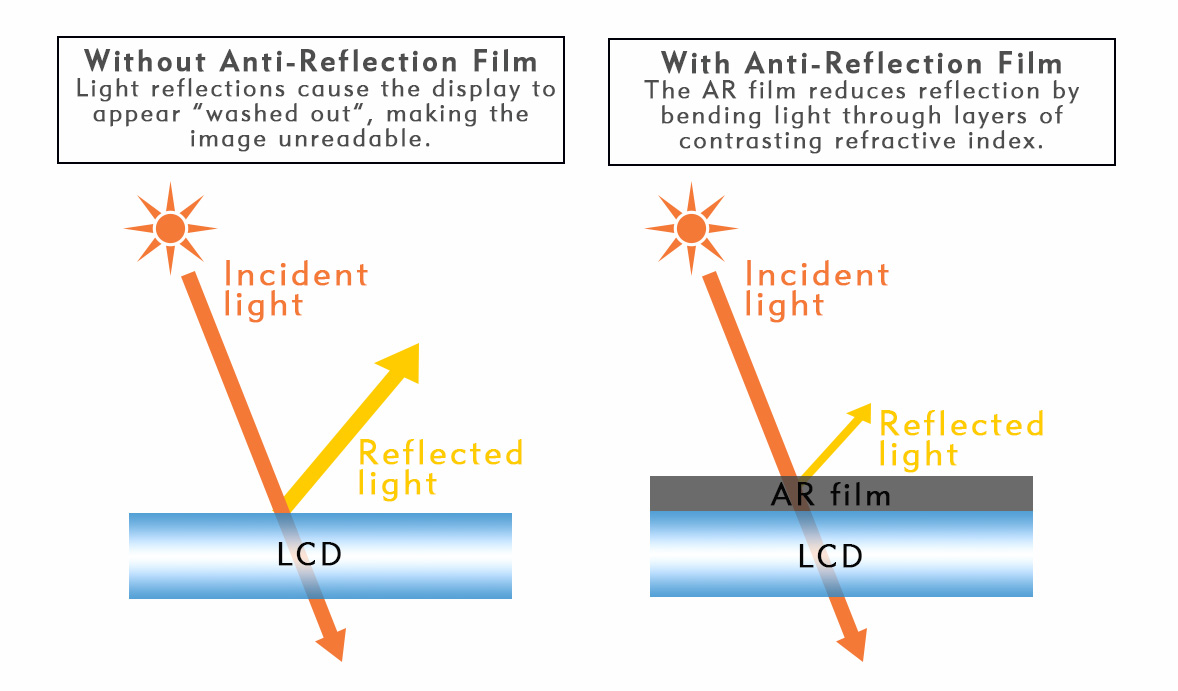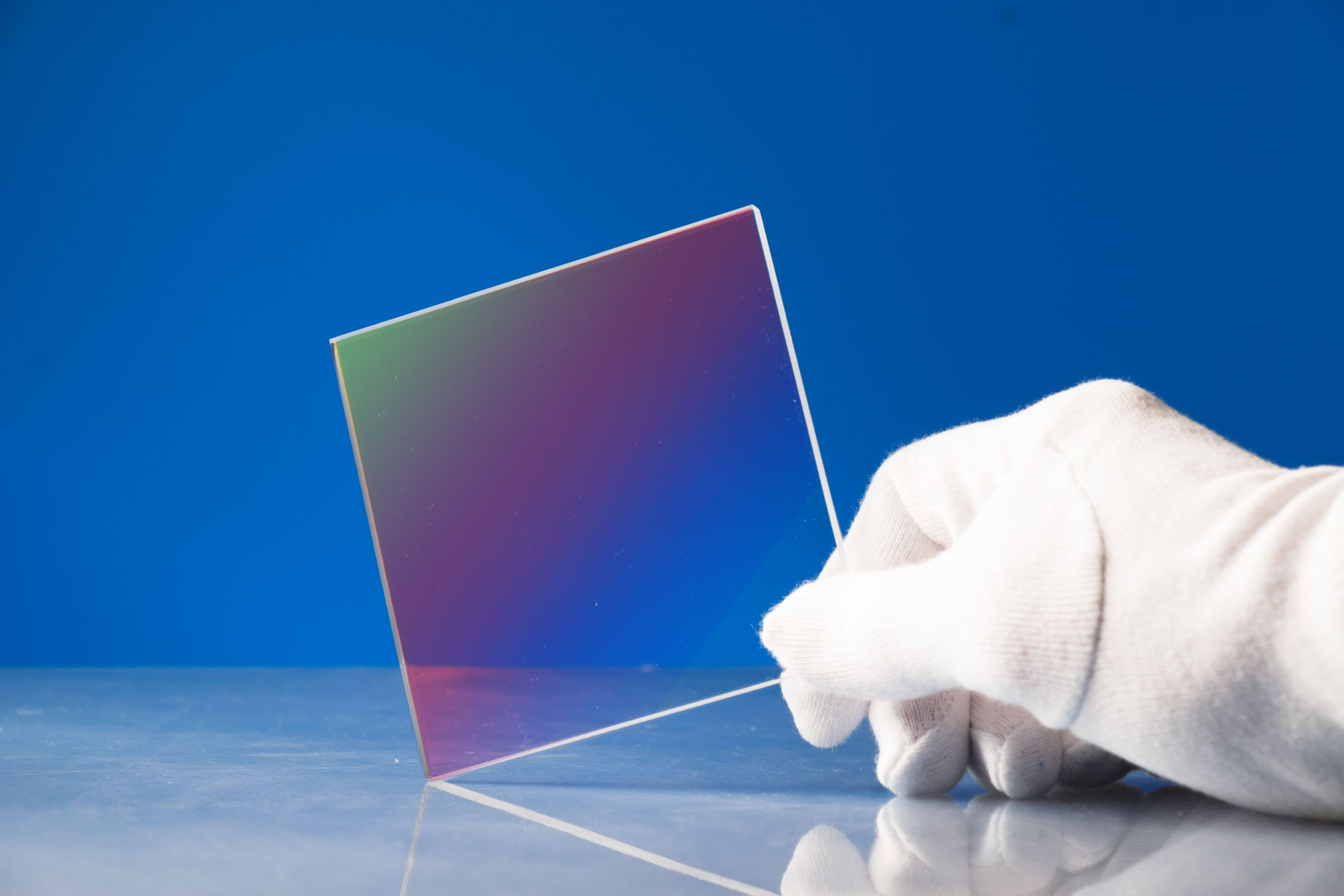AR – Anti Reflective
Unlike diffusion-based Anti-Glare solutions, Anti-Reflection takes into account external and internal sources that may reduce the light transmitted through the display window, thereby reducing the readability of the viewed image. As light passes from one medium to another, the difference between the “refractive index” in the adjacent surfaces creates transitional phase differences, which increase the amount of light reflected. These reflections are cumulative and cause the display to appear “washed out”, making the image unreadable.
Rather than increasing the light output and increasing power consumption, an AR coating can be used which consists of transparent, thin film structures with alternating layers of contrasting refractive index, which results in destructive interference in the light reflected from the interfaces, and constructive interference in the corresponding transmitted light through the surface.

Benefits of Anti-Reflective:
- Anti-reflective films reduce reflection by bending light through objects. It is capable of reducing reflection down to 0.4% at certain wavelength and incident angle, much lower than anti-glare
- Display readability is comprehensively enhanced
Negatives of using an Anti-Reflective:
- More expensive than anti-glare. Another method to consider is optical bonding, which is more expensive again but offers superior readability and reduced reflections further.
